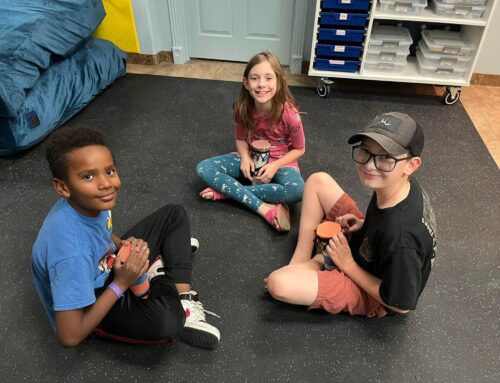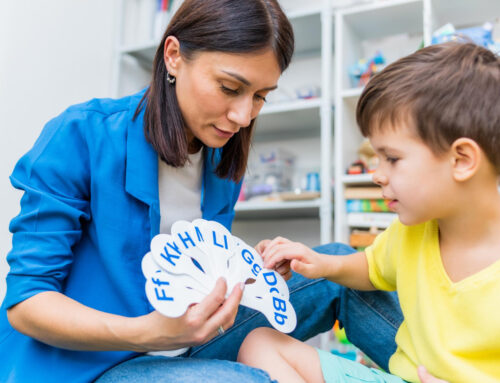
Any parent or caregiver of young children will unanimously agree that tantrums are just a typical element of growing up. Kids test boundaries, they get to hear the word “no”, and they have to be corrected in order to learn and to cope with life’s expectations. Since children are irregularly obedient or accepting of new rules, adults have come to expect adverse reactions. However, there is a huge difference between temper tantrums and full-fledged melt-downs: one fades after a short while and the other completely disrupts the child’s and the families’ abilities to function.
Take a look at the following scenario:
Charles is a 5-year-old boy with reactive attachment disorder (RAD). His foster parents have recently consulted with doctors, psychologists, and therapists about Charles’ inability to cope with change or stress. When his foster mom took him to the family practitioner after her exhibited flu-like symptoms, he had a melt-down in the doctor’s office: started throwing toys at other kids in the lobby, shut himself in the bathroom when others tried to intervene, and uncontrollably screamed for 30 minutes straight. Since doctor’s visits are not part of Charles’ daily routine, his foster mom wondered if this incident was because of the unexpected change to his schedule.
Charles’ situation represents only a sliver of how maladaptive behavior can turn the day completely upside down. Families with aggressive children count on even more damaging scenarios due to some type of disorder or dysfunction. Example diagnoses that are potentially paired with aggressive behavior (although, not in all cases) can include but are not limited to:
- Autism Spectrum Disorder
- Down Syndrome
- Mental Retardation
- Sensory Processing Disorder
- Attachment disorders
- Conduct Disorder
- Rett Syndrome
- Attention Deficit Hyperactivity Disorder (ADHD)
- Oppositional Defiance Disorder (ODD)
The American Psychological Association (APA) defines aggression as “Behavior that cause psychological or physical harm to another individual” (2017). Aggression can be asserted physically, verbally, and emotionally and it is specifically used to harm oneself or others https://www.healthline.com/health/aggressive-behavior#overview1. For children who struggle with managing aggressive tendencies, it could look like any of the following examples:
- Physically attacking or injuring family members, friends, and school teachers
- Screaming or yelling uncontrollably at others
- Performing self-injurious behavior: biting, scratching, hitting themselves
- Throwing objects at other people with the intent to hurt them or to get attention
- Lying or stealing
Uncontrolled, aggressive behavior makes it almost impossible for families to go about their day in a normal manner. Meltdowns result in a limited social life, frequent loss of sleep, problems in school, and daily schedules being meticulously planned to the very last detail in order to minimize any and all behavioral triggers. It is emotionally, physically and psychologically draining for parents to see children whom they love wreak havoc on the whole family and on themselves.
Occupational therapy is one of the few clinical disciplines that can take on aggressive behavior from a pediatric standpoint. Pediatric occupational therapists who work in home health see children at their own home which works out well for observing their behavior in a familiar environment. Although occupational therapists are not licensed to make medical or psychological diagnoses, they can provide the following for parents and families:
- Standardized assessments to examine the child entirely in order to identify all possible triggers for aggressive behavior. Such triggers may include: food aversions or allergies, sensory issues, emotional regulation difficulties, anxiety, inability to cope with stress, change, or unpredictable changes to the schedule, and communication deficiencies that cause frustration with others to name a few.
- Clinical observations in which the OT takes note of EVERYTHING related to the child’s behavior: the home environment, all objects in which the child interacts with (i.e., clothes, toys, school supplies, house appliances, etc.), all interactions with others in the household, all aggressive incidences that occur (what time, where in the house, before or after other activities, etc.), and all unplanned occurrences during the day. There’s no better place for an OT to observe the child than in their own home. Because home is often the more predictable and safe environment for the child, it will be easier to spot specific triggers to maladaptive behavior.
Once OTs gather information about the child under standardized and observational evaluations, then interventions can be tailored to meet the child’s specific needs with the goal in mind that treatment will reduce aggressive behavior and increase functional participation. Examples interventions could include:
- Sensory Integration and Techniques: Pediatric OTs who are educated or certified in sensory integration could provide the child with detailed interventions addressing sensitivities to touch, taste, sight, hearing, smell, balance and movement, and internal or digestive processes.
- Lifestyle changes: This could include modifying the child’s daily habits in a slow and deliberate manner such as sleep, diet, liquid intake, medication management, and exercise.
- Social Participation Interventions: If aggressive behavior is disrupting the child’s ability to form friendships (which it almost always does), the OT can present interventions that would make the child’s social participation skills more effective while reducing the maladaptive behavior.
- Schedule Implementation: OTs can suggest and implement daily schedules for the child to follow and for the parents to carry out. This is extremely helpful for families who have children who struggle with transitions and unpredictability. On the other hand, it can be an inflexible approach when unpredictable events inevitably occur.
- Coping techniques: OT can provide the child with tools to better cope with daily occurrences that cause them stress and anxiety. Types of coping techniques vary depending on what the child finds calming or remedial.>
Once intervention starts, pediatric OTs who work in home health will usually provide treatment in an educational format so that parents and families can carry out clinical techniques on their own without the OT present. Furthermore, OT will often consult with interdisciplinary team members who are relevant to the child’s care (i.e., case workers, psychologists, etc.) in order to better understand the child’s needs and to provide optimal treatment.





